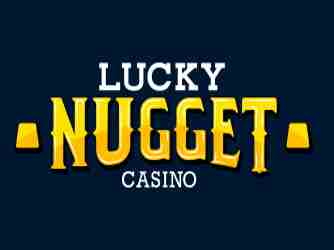Author: Daniel King | Posted on: 2021-04-21 | Last updated on: 2021-09-22
The key of how to win blackjack every time is assembling a card combo that totals closer to 21 than the dealer’s hand – avoiding going over 21. Sounds simple in theory, but a beginner player needs to get a solid grasp of the basic blackjack strategy and odds to achieve winning in practice.
Novices need to know when to hit (request another card), when to stand (keep your current hand unchanged), and when to go all-in and double down (double your current bet). Read the guide below and learn the optimal blackjack strategy online in many tricky situations you may face in the game!


Welcome bonus
No bonuses
No bonuses
Bonus
A lot of Games


Welcome Bonus
100% bonus up to 3000 CAD + 100 FS
3000 CAD + 100 FS
Bonus
A lot of Games


Welcome Bonus
150% bonus up to 200 CAD
200 CAD
Bonus
Slots Casino


Welcome Bonus
100% bonus up to 571.5 CAD + 155 FS
571.5 CAD
Bonus
Best New Casino


Welcome Bonus
100% bonus up to 1000 CAD
1000 CAD
Bonus
A lot of Games


Welcome Bonus
A 100% bonus up to 1500 CAD + 300 FS!
1500 CAD + 300 FS
Bonus
Bitcoin casino


Welcome Bonus
A 100% bonus up to 2000 CAD + 100 FS!
2000 CAD + 100 FS
Bonus
A lot of Games


Welcome Bonus
A 100% bonus up to 1500 CAD!
1500 CAD
Bonus
Best Casino


Welcome Bonus
A 100% bonus up to 600 CAD
600 CAD
Bonus
Best New Casino


Welcome Bonus
A 100% bonus up to 750 CAD
750 CAD
Bonus
Best Casino
Even the most proficient players have not come up with blackjack strategy and solutions on how to win every blackjack game. However, even with a proper blackjack basic strategy, you’ll win your games way more often than lose.
This article covers 14 supreme blackjack strategies with examples, as well as the pros and cons of each suggested move. Keep reading and learn how to make more money from your bets and minimize your losses when the winning chances are poor.
Worth noting, these strategies cover how to win blackjack without counting cards, as many consider that approach unethical. Instead, the article considers the basic system for recreational play and several more advanced moves developed by pro players.
While this blackjack strategy is not a foolproof way how to win every blackjack game, doubling down on a hard 11 secures high success chances and a greater win. Doubling down means making a second bet that is as big as your first one. A hard 11 is an 11 total without an Ace. As opposed to hitting, this works against any dealer upcard in almost all games.
An exception is playing with a multi-card deck in a game where the dealer must stand on a soft 17 (a 17 total including an Ace). In this case, you are better off hitting against a dealer Ace rather than doubling down.
| PROS | CONS |
|---|---|
| If you win, you win considerably more money! | Doubling down, you risk losing twice as much as your original bet. |
| On average, the profit you gain by doubling down is larger than what you could possibly get by standing on a hard 11. | Better off hitting if the dealer is obliged to stand on a soft 17 in a multi-card game. |
| Depending on the specific card combination, your profits will amount to 17.39 to 17.85 cents per every wagered dollar. | ✗ |
| Even if the dealer’s upcard is a 10-value card, your probability of winning remains great! | ✗ |
You are dealt a 7 and a 4, thus forming a hard 11 hand. The recommended move is doubling down. It matters not what the dealer’s upcard is.
A split 8+8 pair ensures you lose less money compared to hitting on a hard 16. This blackjack strategy works even when the dealer’s upcard is a strong 9, 10, or Ace. Your expectations from splitting the 8s will depend on the dealer’s upcard. But it’s the optimal move in any case, allowing you to either minimize losses or even win more.
If you’re wondering how to win blackjack with an A+A pair, there’s no guarantee you will never lose, but dividing the pair into two hands can result in significant gains. Each of the new hands will likely be fairly potent.
| PROS | CONS |
|---|---|
| When you have 8+8 and the dealer’s upcard is 2-7, splitting is the only move with positive expectations. | May still lose to the dealer, despite the overall positive expectations. |
| When you have 8+8 and the dealer’s upcard is 8 or higher, splitting your hand has lower negative expectations than any other move. | Splitting prompts you to bet more. |
| Splitting 8+8, you steer clear of going bust, which is what hitting would likely bring. | When the dealer’s upcard is powerful, some argue that there’s no point in throwing in more money by splitting your 8+8 hand. |
| Splitting 8+8, you get rid of the worst possible hand and create two new ones that have the potential to win. | ✗ |
| Splitting Ace+Ace, you get two high-potential hands based on a flexible-value card. | ✗ |
You are dealt a pair of 8s. Don’t hesitate to split them regardless of the dealer’s upcard. You will have to bet on your newly-created second hand, but this also increases your winning chances.
If you have a hard 10 (two 5s), you are much better off taking a hit or two to add to your total – compared to splitting the 5’s. Splitting and getting the 5 card as the starting cards in the new hands is not how to win blackjack, as losing is almost guaranteed.
Having 10+10 is essentially how to win big at blackjack. You have outstanding odds of winning when sitting on the hard 20. In this scenario, your best bet is to stand. Splitting the cards is very likely to create weaker, potentially losings hands.
| PROS | CONS |
|---|---|
| 10+10 is a solid total that exceeds the average winning hand (18.5). | You may still lose if the dealer gets 21, but the chance of this is small. |
| Choosing to stand on a 10+10 gives you extremely high odds of winning – around 90%. | You may bust if you hit the hard 10 too much. |
| You get better winning chances by hitting on a hard 10, rather than splitting the 5+5 | ✗ |
| Never splitting 5+5 is a simple strategic rule, you don’t have to memorize any variables. | ✗ |
| If you have 5+5 and the dealer’s upcard is 2-9, you can double down to turn the dealer’s weak position to your advantage. | ✗ |
You are dealt a pair of 5s, giving you a hard 10. You should decide to hit, possibly a couple of times, bringing your total up. If the dealer’s upcard is anything between 2 and 9, you can also double down.
Many players choose to stand with a hard 12, fearing that hitting is likely to bust their hand. However, you will lose less often if you hit your hard 12 rather than stand against the dealer’s 2 or 3 upcards.
| PROS | CONS |
|---|---|
| You decrease your chances of losing. | Busting your hand is still a possibility. |
| When you’re holding a hard 12, only 4 cards can make you go bust: 10, J, Q, K. | You may still lose to the dealer’s hand. |
| Five cards in the deck can bring your hard 12 to the haven of 17-21: namely 5, 6, 7, 8, or 9. | ✗ |
| The dealer’s bust chances are around 37% with a 3 upcard and 35% with a 2 upcard. | ✗ |
| If you hit on a hard 12, your winning and losing chances are 37% and 63%, respectively, which is 2% better than your chances in case of standing. | ✗ |
You are dealt a pair of 6s, giving you a hard 12. You are best off to hit in this case, provided that the dealer’s upcard is a 2 or 3.
Many players believe a soft 18 is an easy win. But when the dealer’s upcard is 9, 10, or Ace, this may not be the case at all. You’ll have better odds when hitting on your Ace-7 combination.
If you draw a low card (Ace, 2 or 3), you will end up with a great hand that is higher than 18 and may even land you a 21. If you draw a higher card worth 10, you will not harm your hand as the Ace can convert to 1 if needs be.
| PROS | CONS |
|---|---|
| Statistically speaking, hitting is unlikely to hurt the power of your hand. | May still go bust if you draw a low or medium-value card and need to hit again. |
| When the dealer’s upcard is powerful, your soft 18 is disadvantageous, and hitting gives you a chance to improve your hand. | May still lose to the dealer, unless you get a 3 for a blackjack. |
| Even if you fail to get a stronger hand, hitting minimizes your losses. | ✗ |
You are dealt an Ace and a 7, totaling a soft 18. The dealer’s face-card is an Ace. In this case, your best move is to take a hit.
If you’re holding a 2-card hand totaling 10 and the dealer’s upcard is 9 or lower, luck will favor you to win! Thus doubling down is how to win blackjack in this situation and make money from your hand.
| PROS | CONS |
|---|---|
| You’re almost sure to get a hand that will win you money. | Stand a chance of losing against the dealer. |
| A high likelihood of getting another 10, which will put your hand at 20. | ✗ | You can’t go bust, while the dealer has such a chance, being obliged to hit until 17. | ✗ |
| Due to the dealer’s obligation to stand, the situation is particularly favorable when the dealer’s upcard is 7, 8, or 9. | ✗ |
You are dealt a 7 and a 3, which gives you a 10. The dealer’s upcard is an 8. In this case, your best option is to double down.
With these dealer upcards, your best decision is to double down on any hand from a soft 13 to a soft 18. This will overall net you more winnings.
| PROS | CONS |
|---|---|
| You will win more money. | May bust if hit too much. |
| Taking a high card won’t hurt your hand. | Doubling down on a soft 17 is unwise when the dealer is holding a 7 as their upcard. |
| Doubling down when the dealer’s upcard is low gives you decent winning chances. | ✗ |
You are dealt an A-2 which totals a soft 13, and the dealer’s upcard is a 5. In this case, you are best to double down.
Most people know the popular strategy of splitting a pair of 9s (hard 18). If you search up how to win at blackjack, basic strategy will suggest this move. But if the dealer’s upcard happens to be a 7, there’s a better option.
When the dealer’s face-up card is a 7, your best move is standing on your hard 18. In this situation, there’s a good chance the dealer will upturn a 10-valued card totaling a hard 17. Thus, you would easily win with your 18.
| PROS | CONS |
|---|---|
| Standing is the move recommended by pro gamblers because it nets you greater winnings in the long run as compared to splitting the pair. | If the worst-case scenario takes place, you will tie the score with the dealer’s hand. |
| If you stand on 9+9, any possible outcome of the situation places you in a fairly favorable position. | ✗ |
| Regardless of the dealer’s hole card, they cannot have a high chance of gathering a more potent hand than yours. | ✗ |
You are dealt a pair of 9s, giving you a hard 18 hand. The dealer’s upcard is a 7. You should choose to stand instead of splitting the 9s.
How to win blackjack with a hard 15 or 16? These are the worst, most challenging hands, so winning is highly unlikely. This is even more true when the dealer’s upcard is strong, such as 9, 10, or Ace. In this scenario, the optimal move is to try and minimize your losses by surrendering your hard 15 or 16 hand. You won’t win any money, but you are guaranteed to lose less.
| PROS | CONS |
|---|---|
| You’re extremely likely to lose no matter how you play the hard 15/16 hand, so you might as well minimize your losses by surrendering. | You won’t win money from the current hand. |
| Surrendering is the best option because less than 1 in 4 hard 16 hands can bring the player a win. | ✗ |
| Surrendering your current hand is the forethoughtful option to win more money in the long run. | ✗ |
You are dealt a 10 and a 6, and the dealer’s upcard is an Ace. You are best off just surrendering your hand rather than playing the bad hand and losing more money.
In multi-deck games, you would typically avoid doubling down on a two-card 8. However, since the odds of blackjack change in single-deck games, doubling down is superior to hitting in this scenario.
| PROS | CONS |
|---|---|
| Playing aggressively and doubling down may help you win more money. | It only works in single-deck games. |
| If you have a pair and the game rules allow for doubling down after splitting, you should split your 4+4 hand not only against 5 and 6 but also against 4. | ✗ |
How to win blackjack when you are dealt a 3 card and a 5 card, which gives you a hard 8? Provided that the dealer’s upcard is 6, the best decision you can make is to double down.
DAS stands for the game rules where you are allowed to double down after you split a pair. NDAS is the opposite – you’re not allowed to double down after a split.
When you hold a pair of 2s or 3s, splitting is a better strategy in a DAS game. If you split your pair of 2s or 3s and then double down, you gain very favorable odds and get the opportunity to bet more money.
The exception is playing a single-deck game. In this case, always split a pair of 2s when the dealer shows a 3 upcard, even if doubling down after splitting isn’t allowed.
| PROS | CONS |
|---|---|
| Splitting allows you to take advantage of the dealer’s weak position to win as much as possible. | May still lose to the dealer. |
| Splitting is an offensive play that lets you wager more money in a situation where the dealer is likely to lose. | The strategy differs for single-deck games. |
| A hard 4 or 6 is a bad start, and splitting improves your odds. You transform losing hands into hands that have winning potential. | Some games don’t allow doubling down after splitting. |
| After splitting a 2+2 or 3+3, you have great chances of obtaining a card that will allow you to double down on the new hand. | The strategy has several conditions, which may be hard for a novice to memorize. |
| A low dealer upcard exposes them to a high risk of busting their hand. | ✗ |
| The standing rules applied to the dealer do not affect your strategy. | ✗ |
You are dealt a pair of 2s, and the dealer has a 3 upcard. The game allows doubling down after splitting. In this case, you should break up the 2s and then double down on the new hands.
Traditional blackjack strategy dictates that a hard 16, against the dealer’s 10 upcard, needs a hit. Although this is a viable approach, you can further improve your chances when your 16 is multi-card. If your 16 consists of multiple cards (more than two – for example, 7-5-4), it’s in your best interests to stand against the dealer’s 10 upcard. Standing is not a guarantee of how to win blackjack in this situation, but at least you’ll get better odds and never lose through busting.
| PROS | CONS |
|---|---|
| You do not face a chance of going bust. | Will lose to the dealer’s 17-21. |
| May win more money or at least minimize your losses from the hard 16 hand. | The strategy does not work as well in multi-deck games. |
| A multi-card 16 will contain at least one low-value card. This boosts the dealer’s chances of busting on a hit – slightly, but it’s enough to make standing the most favorable option. | ✗ |
You are dealt a 7 and a 4 for a hard 11. You choose to hit and are dealt a 5, which nets you a hard 16. The dealer’s upcard is a 10-valued card. In this case, you want to stand rather than hit.
Typically, a blackjack hand is consistently paid out at 3 to 2 odds. But these days, many casinos pay a winning player’s blackjack at odds as low as 6 to 5.
This increases the house edge by about 1.45% in a single-deck game and by more than 2% in a double- or multi-deck game. If you want to know how to win blackjack and make money, the obvious strategy is playing only games that offer a 3 to 2 payoff.
| PROS | CONS |
|---|---|
| You get to enjoy better odds — by going from 3:2 to 6:5, the casino adds 1.39% to its advantage. | 3 to 2 games are more challenging to find rather than 6 to 5. |
| Ensuring the best possible odds is how to win money playing blackjack, as your bets will bring greater wins. | ✗ |
| Lose less money – if you were to choose a 6:5 game, your expected losses would surge. | ✗ |
You see a table offering 3 to 2 odds and decide to bet $10. You win with a blackjack, and the payout is $15. If you were playing at a 6 to 5 table, you would only receive a payout of $12.
The insurance bet is considered a sucker bet. It’s a side bet that amounts to 50% of your main bet. It wins if the dealer has a blackjack. But even if the dealer’s upcard is an Ace, steer clear of the insurance bet. The payout is much less than the odds of the dealer realistically having a blackjack.
| PROS | CONS |
|---|---|
| It’s almost always an awful bet, according to the odds. | You lose an opportunity to make some money if the dealer actually has a blackjack. |
| On the insurance bet, you would lose more funds than you can statistically win. | ✗ |
| The casino pays insurance 2:1, but the real odds are 9:4, which suggests more losses. | ✗ |
When a beginner asks how to win at blackjack – basic strategy is the answer, as it is simple and novice-friendly. But for many specific situations, experts have calculated slightly more advanced moves that improve upon the blackjack basic strategy and boost your winning chances even further.
In the worst-case scenario, adhering to the blackjack tips will help you cut your long-term losses, which is just as important. Take your time to memorize the above-listed optimal scenarios of how to win blackjack almost every time so that no situation in the game can catch you off balance.
No, while luck plays a big role in blackjack, the player's actions are what ultimately determines both the immediate and long-term results
A hard hand is a hand that does not contain an Ace as the Ace can count as different numbers causing it to be a soft hand in this case. An example of this is a challenging 17 containing a 10-valued card and a 7.
Doubling down is an exhilarating play in blackjack and can be very profitable too. Doubling down is when you double your bet in the middle of a hand. You can only receive one more card when doubling down. It is considered a risk as if you get a low card, and you cannot hit again.
With smart decisions in every round, the player can change the odds in their favor and expect a positive return
If all game rules are the same, single-deck games favor the player more – but casinos may adjust the rules to make up for this.